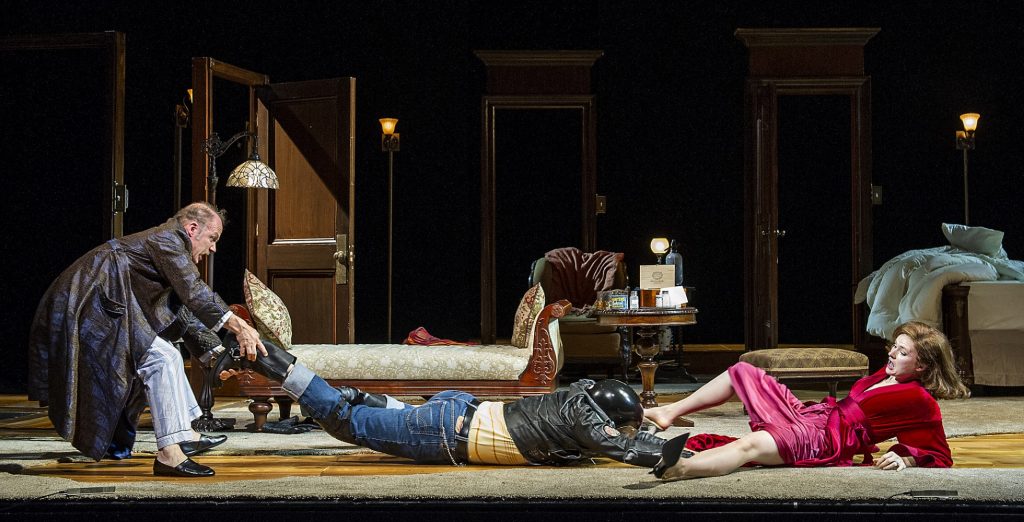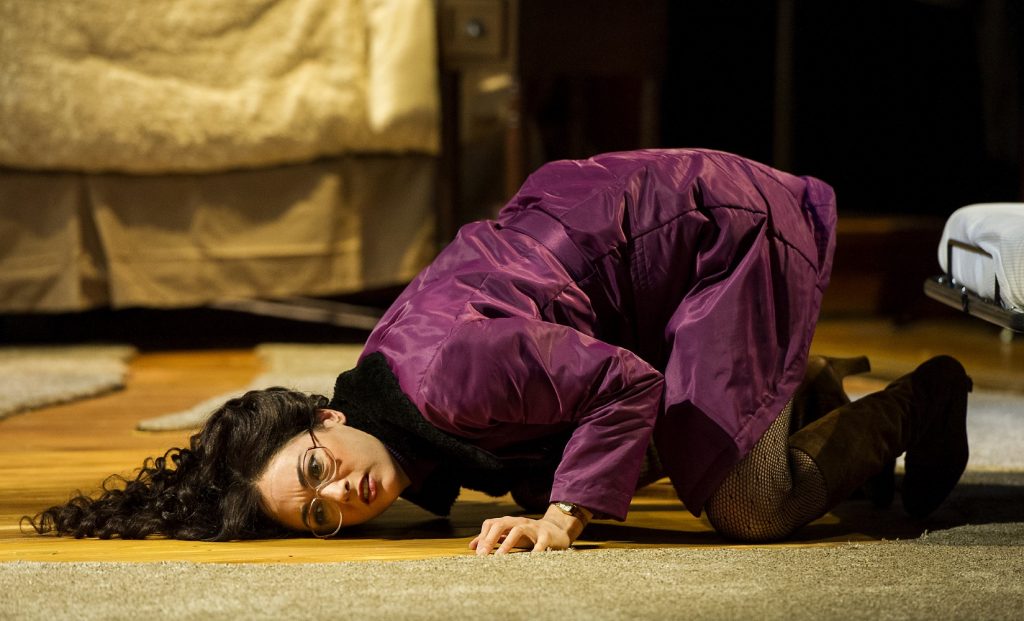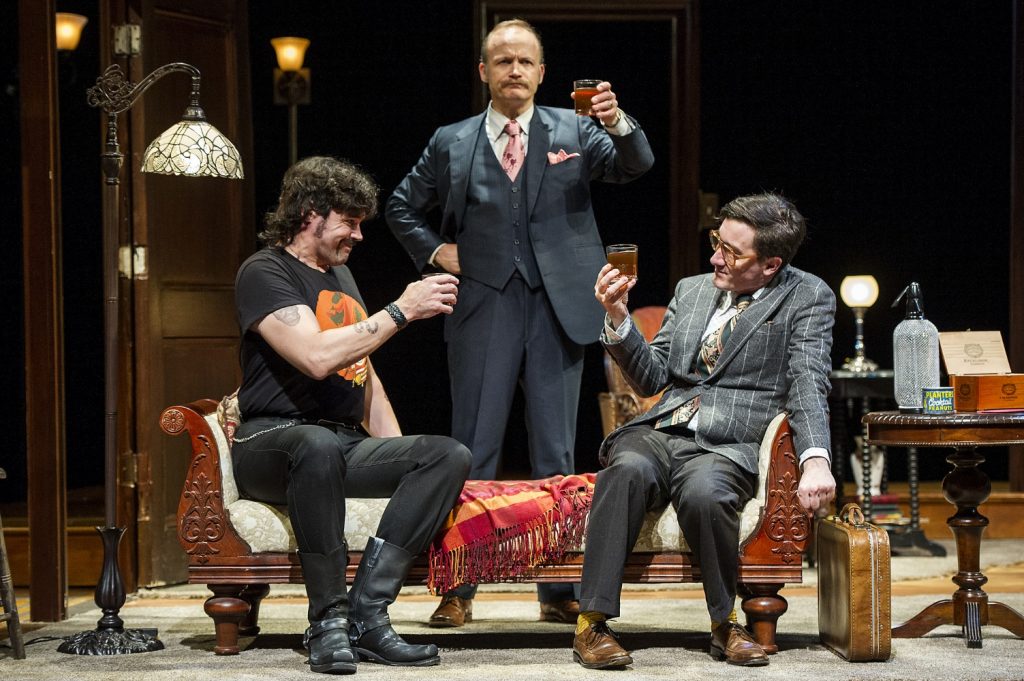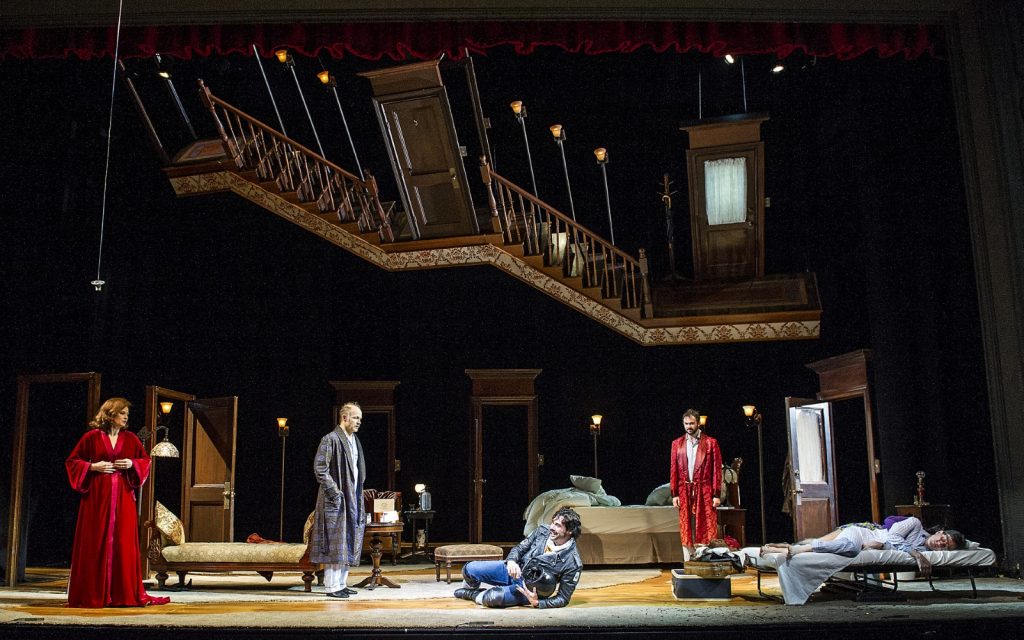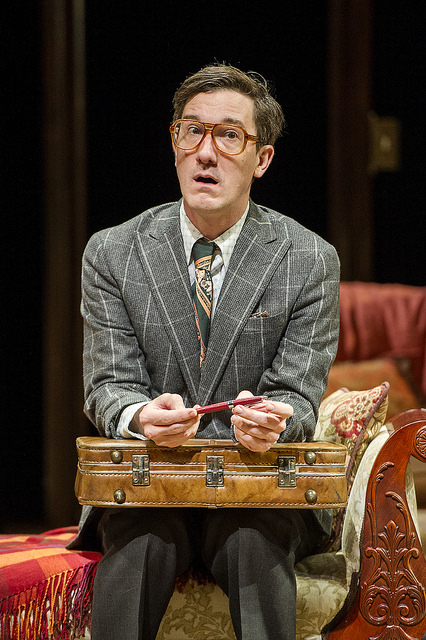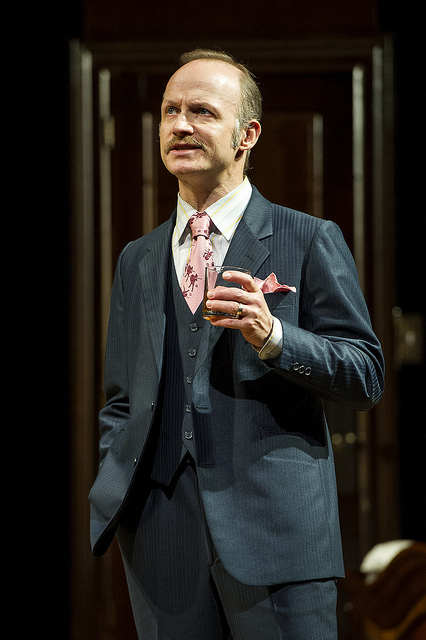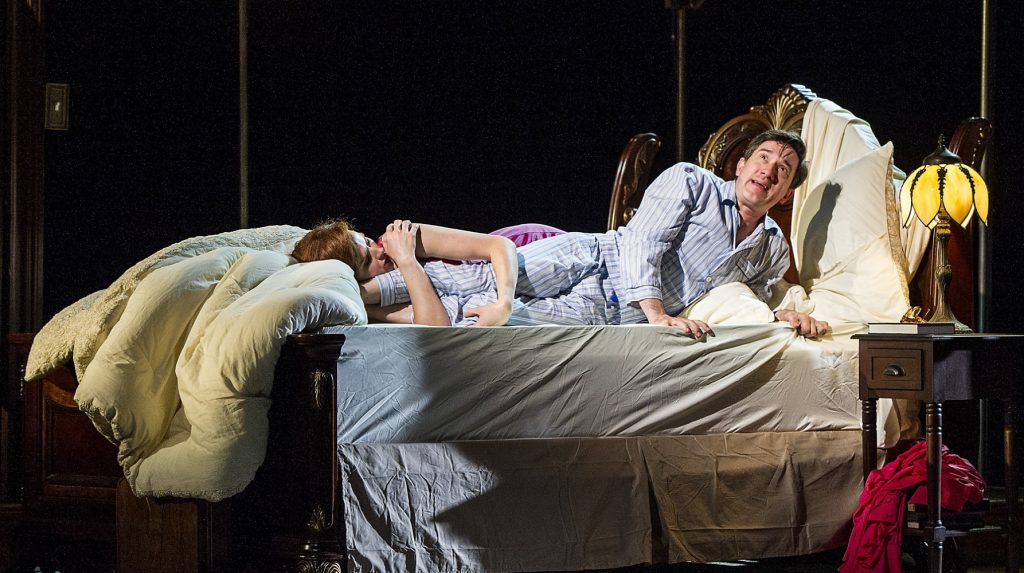The classic sex farce is set in a large room with about half a dozen doors, in and out of which pop guilty lovers, jealous spouses and other staples of the genre, and behind which most of the shenanigans real and suspected take place. Alan Ayckbourne’s classic Taking Steps (at Barrington Stage Company through August 5) turns that convention on its head.
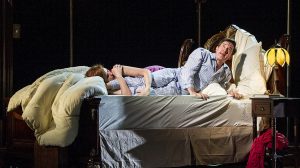 The difference here is that much of what would normally happen offstage (like bedroom monkeyshines) happens onstage, because – and here’s Ayckbourne’s real innovation – the three-story house where the play takes place is all on one level. Stage areas representing the ground-floor drawing room, the upstairs master bedroom and the attic overlap and intermingle, so that actors in different rooms are sometimes actually side by side.
The difference here is that much of what would normally happen offstage (like bedroom monkeyshines) happens onstage, because – and here’s Ayckbourne’s real innovation – the three-story house where the play takes place is all on one level. Stage areas representing the ground-floor drawing room, the upstairs master bedroom and the attic overlap and intermingle, so that actors in different rooms are sometimes actually side by side.
This device creates its own visual hilarity. In Sam Buntrock’s perfectly timed staging, some of the best moments are pure choreography, as characters moving through separate rooms on different floors nearly brush each other in passing. The actors’ disciplined obliviousness is wonderful.
The large Victorian house, rumored to be haunted, is negotiated via several flights of stairs which, in Jason Sherwood’s ingenious set, skirt the sides and back of the stage, and the performers spend a lot of time rushing up and down them. Except, of course, they actually rush along them, giving the impression of ascent and descent with a kind of bouncy stride. (A large three-dimensional model of stairs, landings and doors, hanging at an angle over the stage, provides context and perspective.)
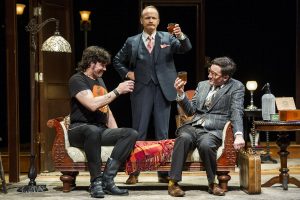 The title has a double meaning. Besides all the physical steps the characters are taking up and down the stairs and in and out of the set’s five doorways, they are also making efforts to move in or out of pressing situations in their lives. Elizabeth is taking steps to leave her tedious and overbearing husband, the business tycoon Roland Crabbe. Her brother Mark thinks his ex-fiancée, Kitty, is on the verge of stepping back into his life. And Crabbe is taking the final measures necessary to purchase the house, which he has been leasing, all the while taking generous measures of whatever liquor is at hand. (The first act is partly an extended drunk scene.)
The title has a double meaning. Besides all the physical steps the characters are taking up and down the stairs and in and out of the set’s five doorways, they are also making efforts to move in or out of pressing situations in their lives. Elizabeth is taking steps to leave her tedious and overbearing husband, the business tycoon Roland Crabbe. Her brother Mark thinks his ex-fiancée, Kitty, is on the verge of stepping back into his life. And Crabbe is taking the final measures necessary to purchase the house, which he has been leasing, all the while taking generous measures of whatever liquor is at hand. (The first act is partly an extended drunk scene.)
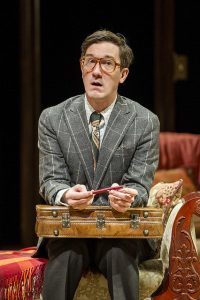 The production is crowded with sidesplitting performances, but I guffawed loudest at Carson Elrod, as Tristram, the novice solicitor (did I mention the play takes place in England?) who shows up with the legal papers to finalize the house sale. He’s tense and twitchy, prone to nervous slips of the tongue (“I’m soliciting for Mr. Crabbe”) and in Elrod’s plastic body and rubber face he’s a laugh-on-sight hoot. Richard Hollis is chillingly funny as the tyrannical Crabbe, keeping his upper lip stiff and his voice peremptory even after his fifth whiskey.
The production is crowded with sidesplitting performances, but I guffawed loudest at Carson Elrod, as Tristram, the novice solicitor (did I mention the play takes place in England?) who shows up with the legal papers to finalize the house sale. He’s tense and twitchy, prone to nervous slips of the tongue (“I’m soliciting for Mr. Crabbe”) and in Elrod’s plastic body and rubber face he’s a laugh-on-sight hoot. Richard Hollis is chillingly funny as the tyrannical Crabbe, keeping his upper lip stiff and his voice peremptory even after his fifth whiskey.
I have only one quibble with the play, and it has nothing to do with the visual gimmick, which is one of the shrewdest in Ayckbourne’s large gimmicky oeuvre. The piece is much more about the men than the women, who act more as plot triggers than active characters. That said, Helen Cespedes makes the most of Kitty’s pissed-off desperation as she finds herself trapped in a cabinet for long periods of both acts while Mark (a perplexed Luke Smith) searches for her in vain. And Claire Brownwell makes an alluring and self-absorbed Elizabeth, an aging ex-dancer torn between art and comfort. Both of her key comic moments involve oral sex, including a slapstick encounter with the motorcycle-helmeted owner of the house (Matthew Greer, hearty and hairy).
As Barrington’s artistic director Julie Boyd observed in her opening-night curtain speech, we could all use a laugh these days. This production delivers to its grateful audience about as many laughs as there are imaginary stairs in this three-story farce.
Photos by Daniel Rader – see gallery above
If you’d like to be notified of future posts, email StageStruck@crocker.com

